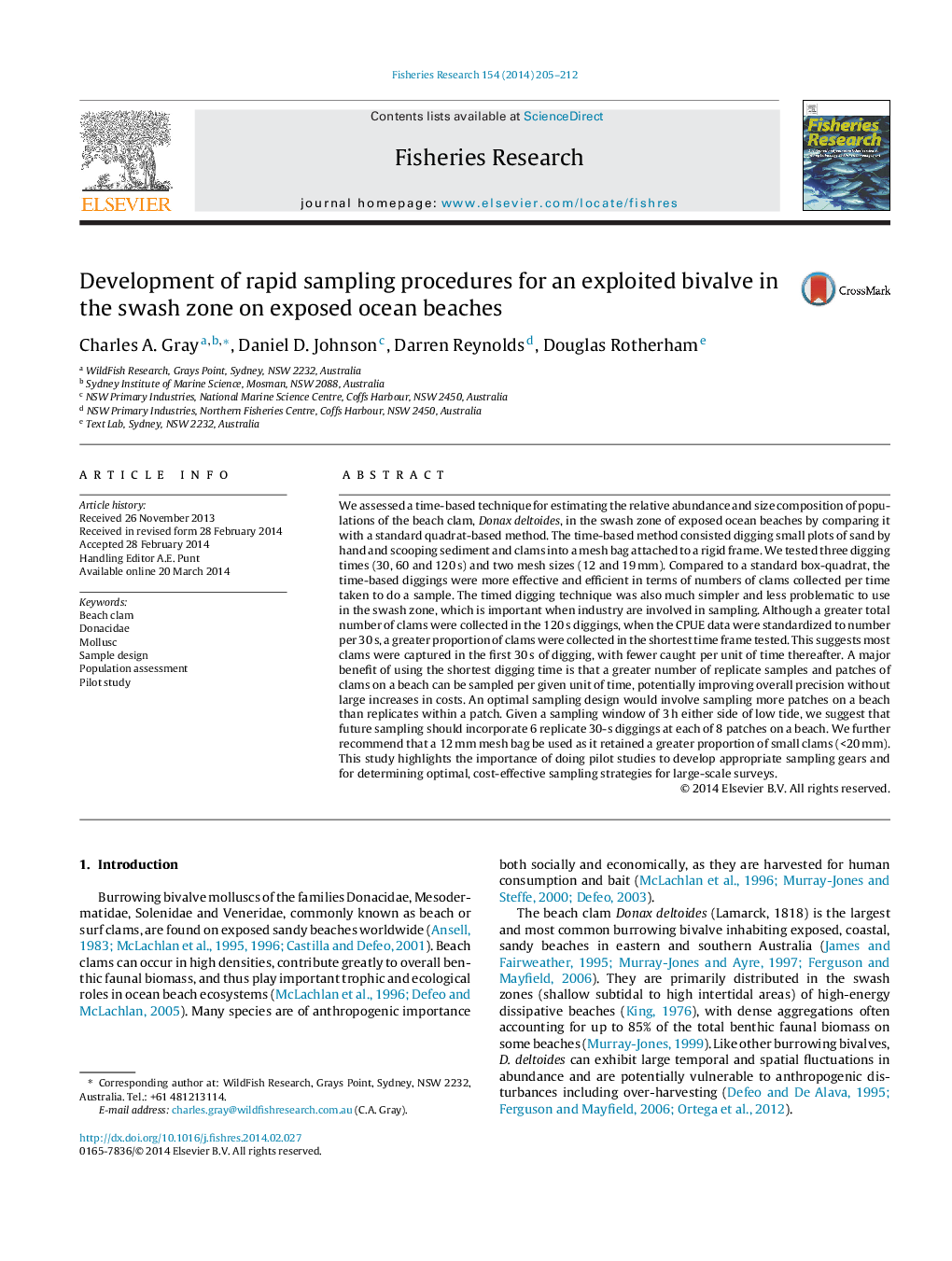| Article ID | Journal | Published Year | Pages | File Type |
|---|---|---|---|---|
| 6385928 | Fisheries Research | 2014 | 8 Pages |
We assessed a time-based technique for estimating the relative abundance and size composition of populations of the beach clam, Donax deltoides, in the swash zone of exposed ocean beaches by comparing it with a standard quadrat-based method. The time-based method consisted digging small plots of sand by hand and scooping sediment and clams into a mesh bag attached to a rigid frame. We tested three digging times (30, 60 and 120Â s) and two mesh sizes (12 and 19Â mm). Compared to a standard box-quadrat, the time-based diggings were more effective and efficient in terms of numbers of clams collected per time taken to do a sample. The timed digging technique was also much simpler and less problematic to use in the swash zone, which is important when industry are involved in sampling. Although a greater total number of clams were collected in the 120Â s diggings, when the CPUE data were standardized to number per 30Â s, a greater proportion of clams were collected in the shortest time frame tested. This suggests most clams were captured in the first 30Â s of digging, with fewer caught per unit of time thereafter. A major benefit of using the shortest digging time is that a greater number of replicate samples and patches of clams on a beach can be sampled per given unit of time, potentially improving overall precision without large increases in costs. An optimal sampling design would involve sampling more patches on a beach than replicates within a patch. Given a sampling window of 3Â h either side of low tide, we suggest that future sampling should incorporate 6 replicate 30-s diggings at each of 8 patches on a beach. We further recommend that a 12Â mm mesh bag be used as it retained a greater proportion of small clams (<20Â mm). This study highlights the importance of doing pilot studies to develop appropriate sampling gears and for determining optimal, cost-effective sampling strategies for large-scale surveys.
